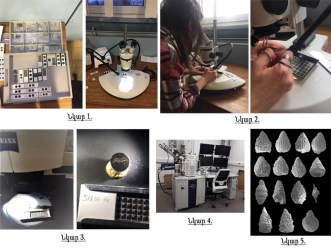Erasmus+: Dating Armenia Through Microfossils
March 16, 2022
Within the frameworks of Erasmus + International Credit Mobility Lilit Sargsyan, a second-year student at ISEC Geology Department, has successfully completed her first semester at the University of Lille, France, and is currently carrying out her research for her Master's thesis in the archeology laboratory. As Lilit highlights, it is easier to organize not only daily but also scientific life in Europe.
If, for example, performing microscopic or spectroscopic examinations of samples in Armenia is a technically difficult task to perform, the work that requires weeks for accomplishment can be done just in hours at the University of Lille.
The objectuve of Lilit’s master's thesis is to carry out dating of the area with the help of microfossils. For this purpose, first of all, it is necessary to separate moderate or well-preserved microfossils from the samples with the help of a binocular or microscope (Fig. 1,2), then transfer them to a special stab (Fig. 3), in step 3 the stab is placed in a scanning electron microscope (Fig. 4), and we can see SEM images (Figure 5).
With the help of these images, taxonomic identification of radiolaria is performed according to their appearance, skeleton, exterior decoration, size, etc. The identification enables to understand how many millions of years ago microfossils existed in Armenia, which serves as a basis for dating a given area or section.
